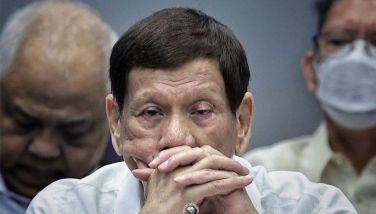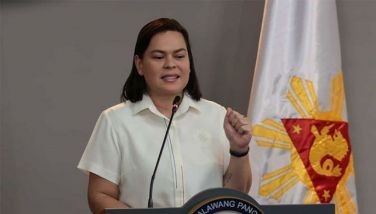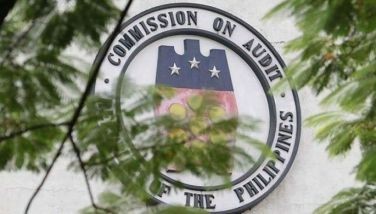Foreign crocodile experts studying Agusan crocs
SIARGAO ISLAND, Surigao del Norte, Philippines – Foreign crocodile experts from the non-government organization World Conservation Union (WCU) are now studying the origins of saltwater crocodiles found in the Agusan Marsh and swamps in Del Carmen town here.
American Peter Webb Graham, a member of the WCU’s Crocodile and Wildlife Conservation Project, recently visited the swamps of Del Carmen and Bunawan in Agusan del Sur, where the 21-foot crocodile “Lolong” was captured last month.
Graham said they are studying the similarities of Lolong with another 19-foot crocodile known as “Kibol” that was captured at the swamps of Del Carmen in Siargao Island in 1992.
He said both Lolong and Kibol are saltwater crocodiles.
Lolong is being kept in a fenced pond at the remote Barangay Consuelo in Bunawan, Agusan del Sur, while Kibol, which means amputated in English because the animal’s tail had been cut, is now at the Palawan Crocodile Farm in Puerto Princesa City.
Graham said they are studying the possibility that the species of Lolong and Kibol have the same origin even though the two animals thrived in different places.
He said both Kibol and Lolong have the same features and have attacked humans and animals alike.
The American expert said the study would also include how saltwater crocodiles breed in freshwater swamps like the 96,000-hectare Agusan Marsh, the second largest wetland area in the country.
Local government officials and a team from the Palawan Wildlife Rescue and Conservation Center captured Lolong after the animal reportedly killed several local fishermen.
Lolong had been confirmed to be the largest crocodile in captivity in the country and could be a candidate for the Guinness Book of World Records.
On the other hand, Kibol had terrorized residents in Del Carmen since the late 1970s up to the early 1990s.
Experts from the Department of Environment and Natural Resources (DENR), local officials of Surigao del Norte, and non-government organizations went on a massive hunt for Kibol at Siargao Island.
Even the late House Speaker Ramon Mitra joined the hunt and after several months the giant crocodile was captured and airlifted to the Palawan Crocodile Farm.
Del Carmen Mayor Alfredo Matugas Corro said the PAWB and the Palawan Wildlife Conservation and Crocodile Preservation Center would put up a protected crocodile sanctuary in Del Carmen town.
Corro said Del Carmen officials have been preserving the swamps’ biodiversity.
The DENR and other concerned government agencies as well as environmental groups have given Del Carmen several awards and commendations for the town’s programs for the protection of the environment and climate change projects.
Foreign crocodile experts studying Agusan crocs
By Ben Serrano
SIARGAO ISLAND, Surigao del Norte, Philippines – Foreign crocodile experts from the non-government organization World Conservation Union (WCU) are now studying the origins of saltwater crocodiles found in the Agusan Marsh and swamps in Del Carmen town here.
American Peter Webb Graham, a member of the WCU’s Crocodile and Wildlife Conservation Project, recently visited the swamps of Del Carmen and Bunawan in Agusan del Sur, where the 21-foot crocodile “Lolong” was captured last month.
Graham said they are studying the similarities of Lolong with another 19-foot crocodile known as “Kibol” that was captured at the swamps of Del Carmen in Siargao Island in 1992.
He said both Lolong and Kibol are saltwater crocodiles.
Lolong is being kept in a fenced pond at the remote Barangay Consuelo in Bunawan, Agusan del Sur, while Kibol, which means amputated in English because the animal’s tail had been cut, is now at the Palawan Crocodile Farm in Puerto Princesa City.
Graham said they are studying the possibility that the species of Lolong and Kibol have the same origin even though the two animals thrived in different places.
He said both Kibol and Lolong have the same features and have attacked humans and animals alike.
The American expert said the study would also include how saltwater crocodiles breed in freshwater swamps like the 96,000-hectare Agusan Marsh, the second largest wetland area in the country.
Local government officials and a team from the Palawan Wildlife Rescue and Conservation Center captured Lolong after the animal reportedly killed several local fishermen.
Lolong had been confirmed to be the largest crocodile in captivity in the country and could be a candidate for the Guinness Book of World Records.
On the other hand, Kibol had terrorized residents in Del Carmen since the late 1970s up to the early 1990s.
Experts from the Department of Environment and Natural Resources (DENR), local officials of Surigao del Norte, and non-government organizations went on a massive hunt for Kibol at Siargao Island.
Even the late House Speaker Ramon Mitra joined the hunt and after several months the giant crocodile was captured and airlifted to the Palawan Crocodile Farm.
Del Carmen Mayor Alfredo Matugas Corro said the PAWB and the Palawan Wildlife Conservation and Crocodile Preservation Center would put up a protected crocodile sanctuary in Del Carmen town.
Corro said Del Carmen officials have been preserving the swamps’ biodiversity.
The DENR and other concerned government agencies as well as environmental groups have given Del Carmen several awards and commendations for the town’s programs for the protection of the environment and climate change projects.
- Latest
- Trending
































